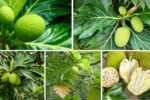If there’s one houseplant that’s taken the world of interior décor by storm in recent years, it’s the Fiddle Leaf Fig (Ficus lyrata). With its large, violin-shaped leaves and bold, architectural silhouette, this stunning plant has become a favorite for plant lovers and designers alike.
But while it’s undeniably beautiful, the Fiddle Leaf Fig also has a reputation for being a little fussy. The good news? With the right care and a bit of know-how, you can successfully grow and maintain a thriving Fiddle Leaf Fig in your home.
In this detailed guide, we’ll cover everything you need to know about how to start growing Fiddle Leaf Figs — from choosing the healthiest plant to watering, fertilizing, pruning, and troubleshooting common issues.
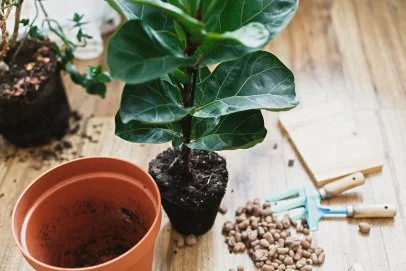
What is a Fiddle Leaf Fig?
The Fiddle Leaf Fig (Ficus lyrata) is a tropical evergreen tree native to the rainforests of Western Africa. Known for its large, glossy, fiddle-shaped leaves, it can grow up to 50 feet tall in the wild and between 6-10 feet indoors if given the right conditions.
These plants make a bold statement in living rooms, offices, and sunrooms — and with the right care, they can live for decades.
Why You’ll Love Growing Fiddle Leaf Figs
- Stunning Foliage: The dramatic, oversized leaves instantly elevate the style of any room.
- Air Purifying: Like many houseplants, it helps remove toxins from the air.
- Architectural Accent: Works beautifully as a statement floor plant or corner feature.
- Rewarding Growth: With proper care, you’ll be rewarded with new, beautiful leaves regularly.
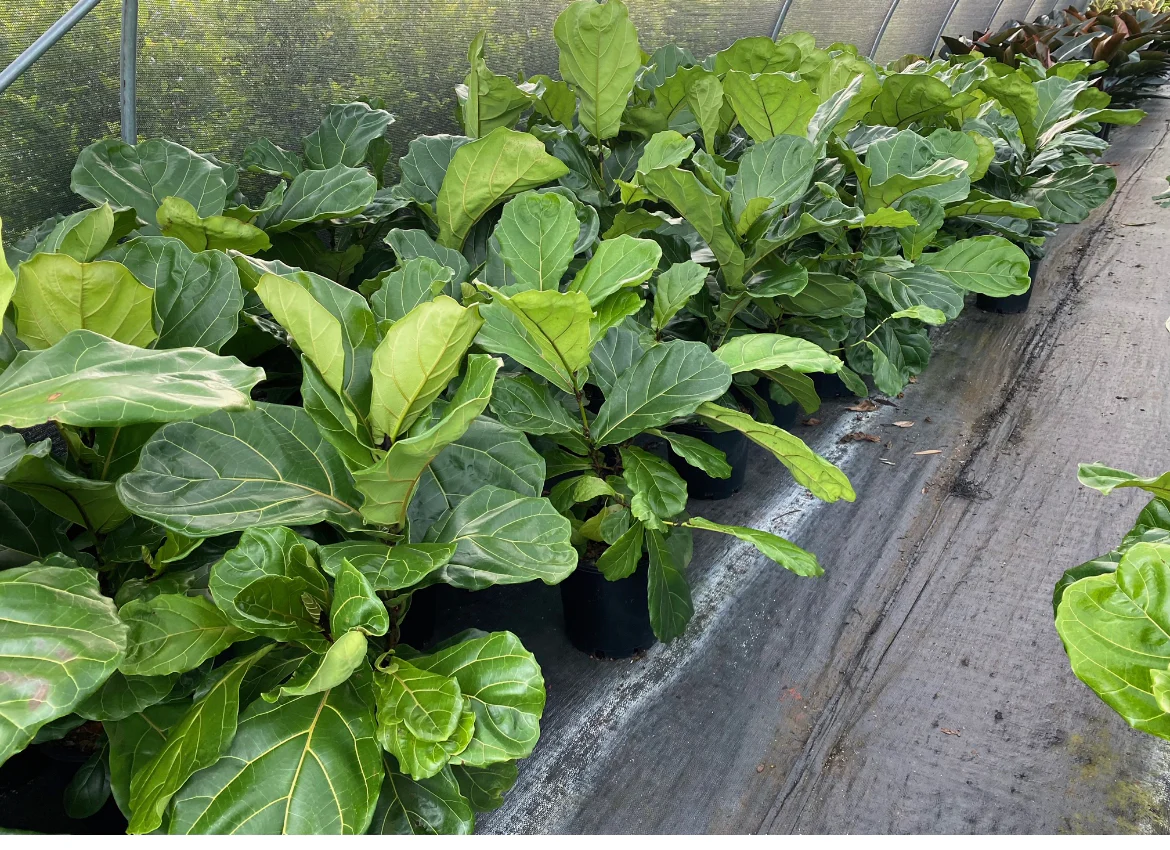
Choosing a Healthy Fiddle Leaf Fig
When selecting your plant at a nursery or garden center, look for:
- Bright, green, glossy leaves without brown spots, tears, or blemishes.
- A firm, upright stem with no signs of leaning or weakness.
- Evenly spaced leaves along the stem.
- Check for pests like spider mites or mealybugs under the leaves.
You’ll find two main varieties:
- Standard Tree Form: A single tall trunk with a leafy canopy.
- Bush Form: A fuller plant with multiple stems from the base.
Choose the form that fits your space and design preferences.
Choosing the Right Pot and Soil
Pot Requirements:
- Use a pot with drainage holes to prevent root rot.
- Choose a sturdy, heavy pot for taller plants to prevent tipping.
Ideal Soil:
Fiddle Leaf Figs need well-draining, nutrient-rich soil.
You can use:
- A high-quality indoor potting mix
- Or make your own with:
- 2 parts potting soil
- 1 part perlite
- 1 part pine bark fines (for aeration)
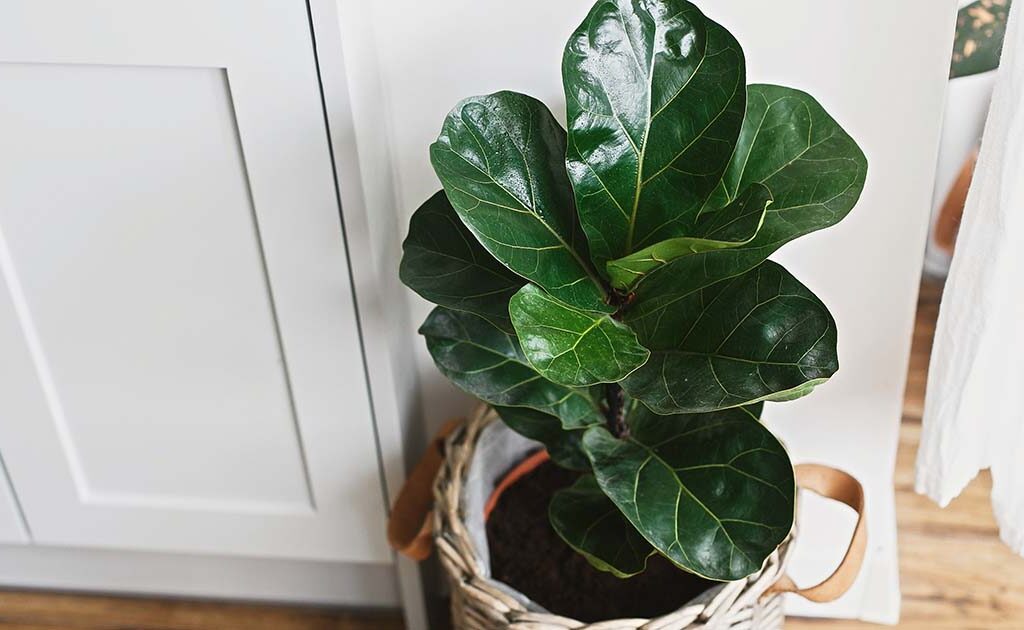
Light and Temperature Needs
Light:
This is one of the most important aspects of Fiddle Leaf Fig care.
- Bright, indirect sunlight is ideal.
- Place near a south or east-facing window with filtered light.
- Avoid direct afternoon sun, which can scorch leaves.
- Rotate the plant every week so all sides receive even light, preventing lopsided growth.
Low light leads to stunted growth and leaf drop.
Temperature:
- Ideal range: 60°F – 85°F (16°C – 29°C)
- Keep away from cold drafts, heaters, and sudden temperature changes.
Humidity:
Fiddle Leaf Figs love humidity.
If your home is dry:
- Mist the leaves regularly
- Place a humidifier nearby
- Or set the pot on a pebble tray with water
How to Water a Fiddle Leaf Fig
Watering is another crucial factor in keeping your Fiddle Leaf Fig healthy.
When to Water:
- Check soil moisture by sticking your finger 2 inches into the soil.
- Water when it feels dry at that depth.
On average:
- Once a week in spring and summer
- Every 10-14 days in fall and winter
How to Water Properly:
- Water thoroughly until it runs from the drainage holes.
- Empty the saucer after 15 minutes to prevent standing water.
- Use room-temperature, filtered water if possible.
Signs of Overwatering:
- Yellowing leaves
- Brown spots at the center of leaves
- Mushy roots or moldy soil
Signs of Underwatering:
- Drooping or curling leaves
- Dry, brittle leaf edges
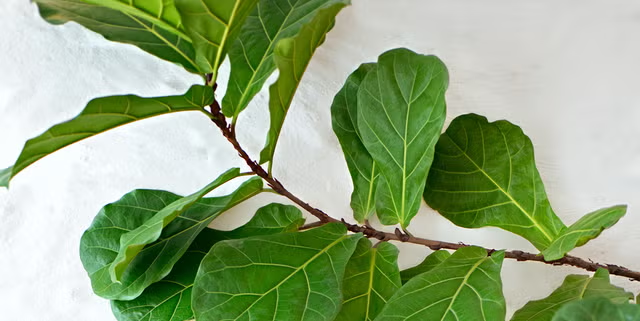
Fertilizing Fiddle Leaf Figs
Fiddle Leaf Figs benefit from regular feeding during the growing season.
Fertilizer Type:
- Use a balanced, water-soluble fertilizer (NPK 3-1-2)
Feeding Schedule:
- Every 4-6 weeks from spring through early fall
- Avoid fertilizing in winter when growth slows
Over-fertilizing can cause brown leaf tips and root damage, so stick to recommended amounts.
Pruning and Maintenance
Pruning isn’t just for shaping — it also encourages healthier, bushier growth.
When to Prune:
- In early spring or summer, during active growth.
How to Prune:
- Use clean, sharp pruning shears
- Remove any:
- Dead or damaged leaves
- Leaves with persistent brown spots
- Crowded or crossing branches
To shape:
- Trim above a leaf node (the bump where a leaf meets the stem)
- New branches will sprout from that node.
Wipe leaves regularly with a damp cloth to remove dust, which can block light absorption.
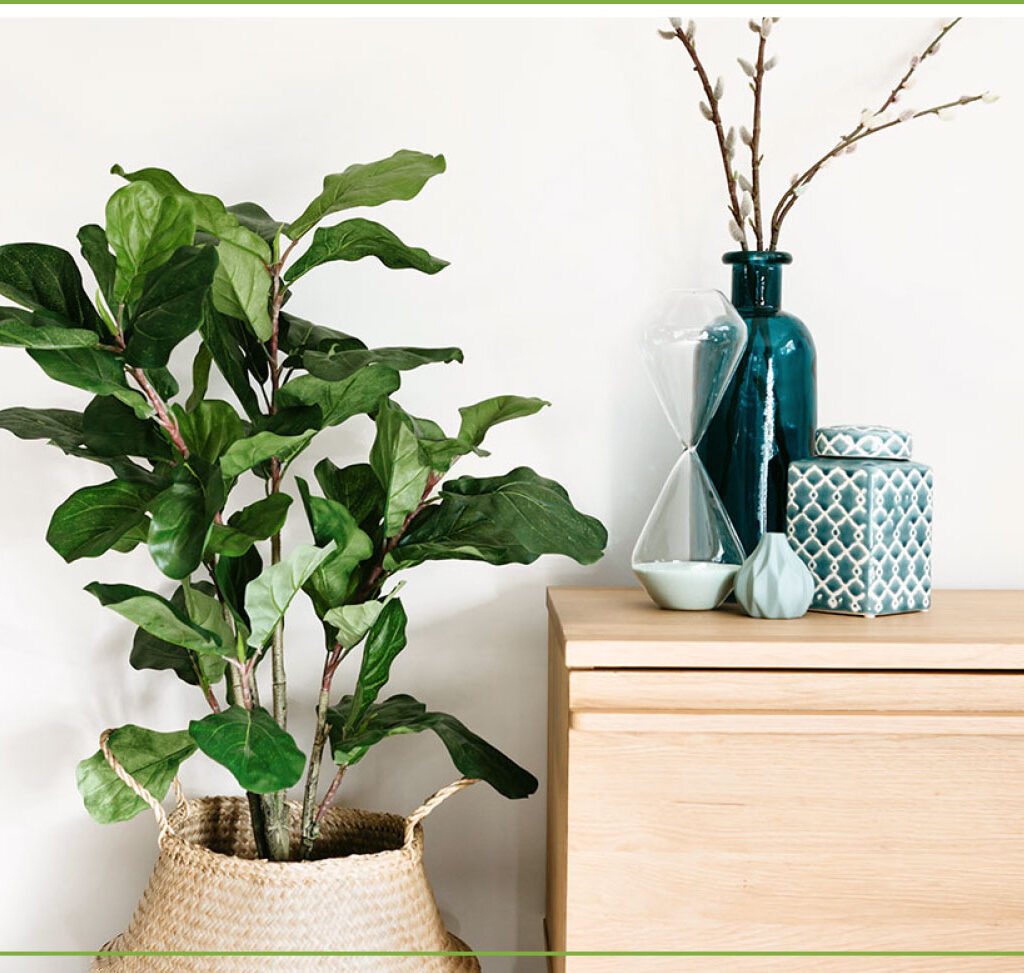
Repotting Fiddle Leaf Figs
As your Fiddle Leaf Fig grows, it will need repotting every 1-2 years.
When to Repot:
- Roots are growing out of the drainage holes.
- Soil dries out too quickly.
- Plant seems top-heavy.
How to Repot:
- Choose a pot 2 inches larger in diameter.
- Gently loosen the root ball.
- Remove any dead or mushy roots.
- Place in fresh, well-draining soil.
- Water thoroughly.
Common Problems and How to Fix Them
1. Brown Spots on Leaves
- Cause: Overwatering or fungal disease
- Fix: Improve drainage, reduce watering, and remove affected leaves.
2. Yellowing Leaves
- Cause: Overwatering, poor light, or cold drafts
- Fix: Adjust watering schedule, move to brighter light, check room temperature.
3. Drooping Leaves
- Cause: Underwatering, overwatering, or environmental stress
- Fix: Check soil moisture and adjust care routine.
4. Leaf Drop
- Cause: Sudden environmental changes
- Fix: Maintain consistent temperature and light exposure.
5. Pests (Spider Mites, Mealybugs)
- Fix: Wipe leaves with soapy water or neem oil. Increase humidity.
Propagating Fiddle Leaf Figs
Propagation is possible through stem cuttings.
How to Propagate:
- Cut a 6-8 inch stem below a leaf node.
- Remove lower leaves, leaving 1-2 at the top.
- Place in water or moist potting mix.
- Keep in bright, indirect light.
- Roots will develop in 4-6 weeks.
Once roots are 2-3 inches long, transplant to soil.
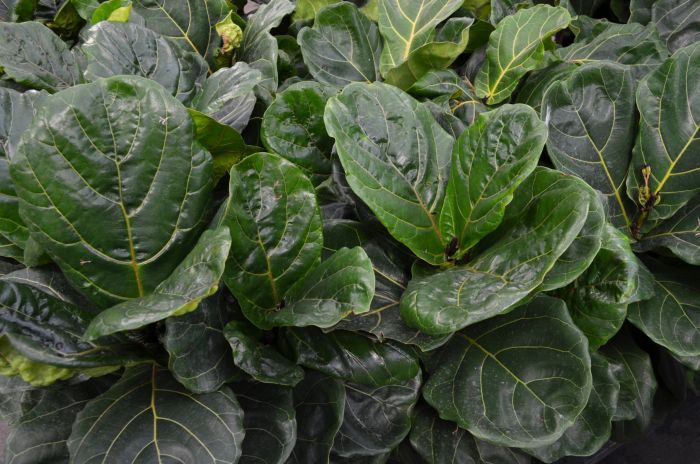
Final Thoughts
While the Fiddle Leaf Fig can be a bit particular about its care, it rewards attentiveness with stunning, lush growth and impressive architectural beauty. By following this detailed guide on how to start growing Fiddle Leaf Figs, you’ll be well on your way to nurturing a thriving plant that transforms your living space.
Provide it with bright indirect light, careful watering, occasional feeding, and lots of love — and your Fiddle Leaf Fig will become a show-stopping centerpiece for years to come.



